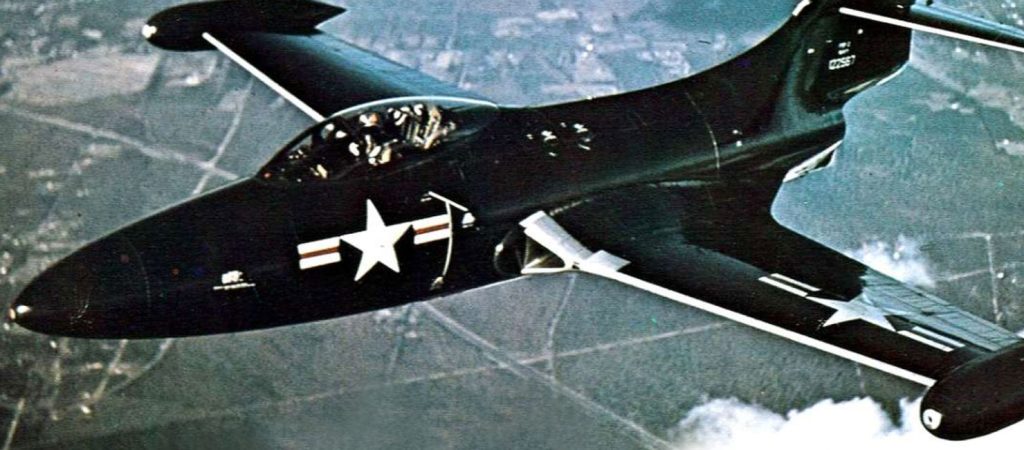The Grumman F9F Panther is not only the very first jet fighter from the aircraft manufacturer Grumman but also happens to be the very first carrier-based jet fighter of the US Navy that had successful deployment from aboard an aircraft carrier. This was s single-seater day fighter jet with straight wing design which was armed with 4 of the 20 mm cannons along with the capability to carry a wide range of munitions for air-to-surface strikes.
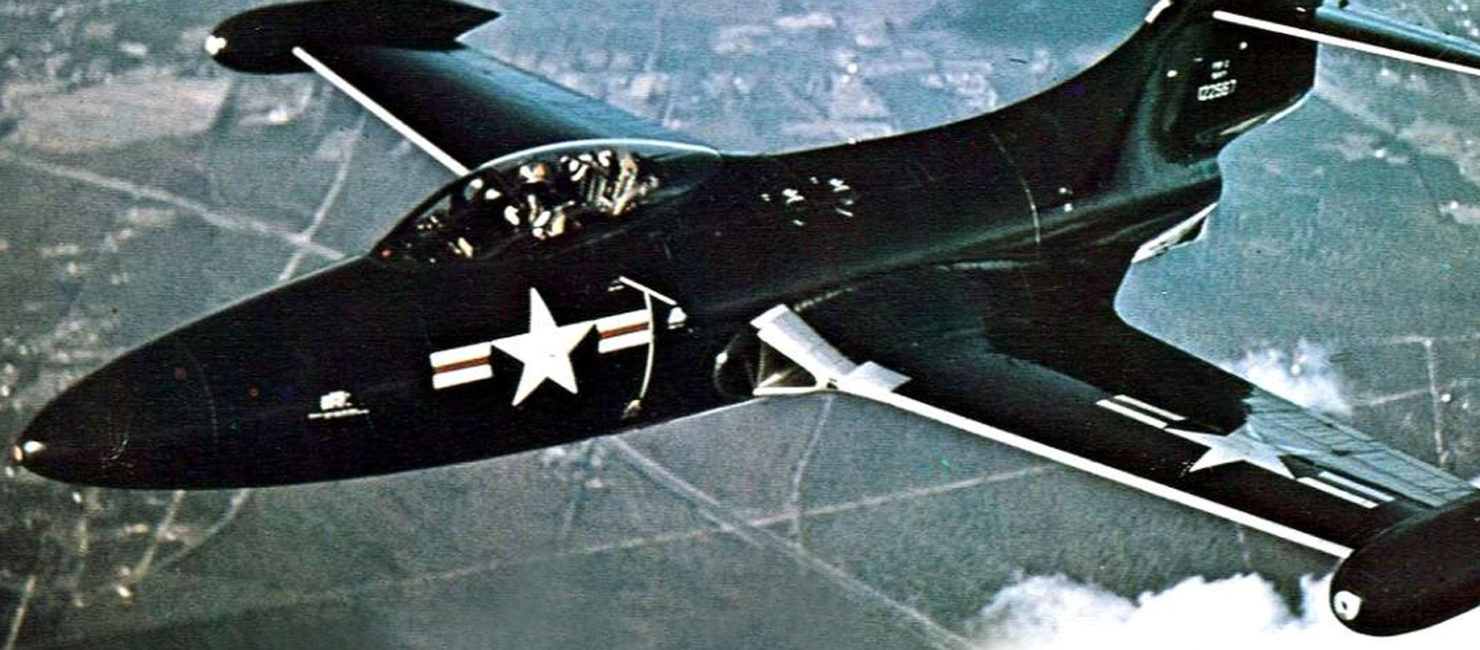
The Grumman F9F Panther saw the extensive combat time during the Korean War by both the Marine Corps and the US Navy. This is not all, Grumman F9F Panther also happens to have a history with the famed acrobatics team of Blue Angles. It happens to be their first jet fighter which they used for their flight acrobatics from the year 1949 to 1954. Later the aircraft was put up for export and the very first country to purchase it was Argentina and it went on to become their first-ever jet fighter for their Argentine Naval Aviation.
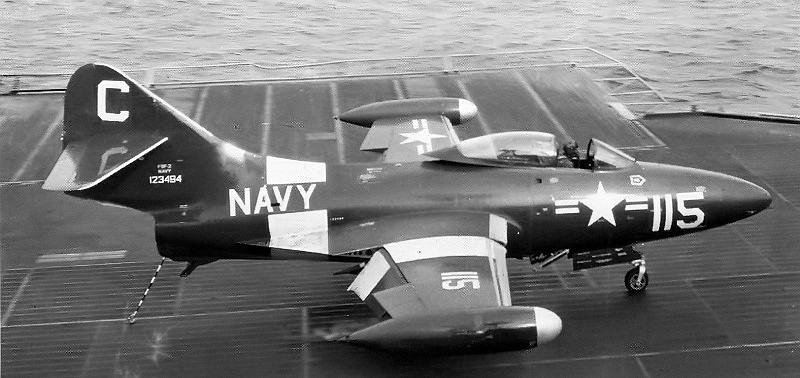
Nearly 1382 of the Grumman F9F Panthers were manufactured and the last of them retired from the US Navy back in 1959 while the ones from Argentina retired back in 1969. This was the aircraft that laid the foundation for the next Grumman project; a swept winged jet fighter named Grumman F-9 Cougar.
Last jet fighter with Guns
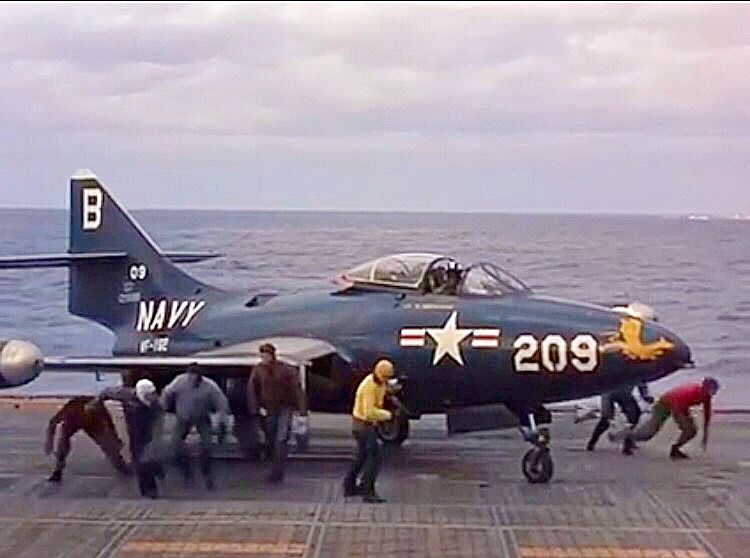
While the Grumman F9F Panther is known to be first of two things like being the successful first carrier-based jet fighter and the very first fighter jet of the US Navy it also has the last title too. This is the last jet fighter from its era to have the pre-installed guns. The reason for the installed guns was that it was an improvement on the design of its predecessor aircraft named F-8U Crusader; the greatest and the last of the American gunfighter aircraft.
Apart from its 4 main 20 mm AN/M3 cannons, this aircraft had hardpoints underneath its wings that allowed for it to carry a wide assortment of munitions for both air-to-surface and air-to-air combat.

As for each of its An/M3 cannons, they had 190 rounds each which gave the Grumman F9F Panther with the firepower of 760 rounds to rain down on enemy forces. This much firepower was not only deadly to the ground troops but also to the enemy fighter jet.
Powerplant
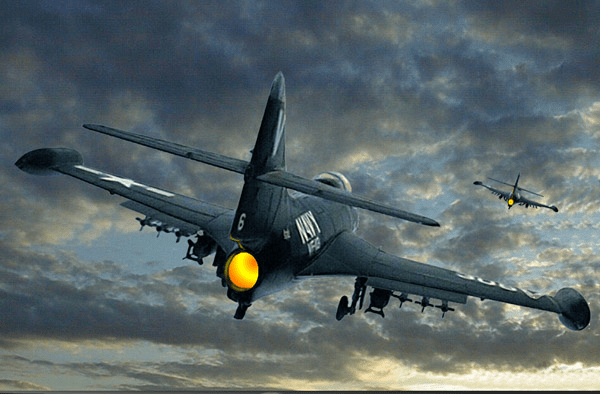
A single one of the Pratt & Whitney J42-P-6 or the P-8 turbojet engine that used water injection powered the F9F Panther. Either of these J42-P-6 and P-8 engines was able to generate a thrust of 5950 lb/ft. this much power allowed the F9F Panther to fly at a top speed of 925 km/h at a service altitude of 44600 feet for a maximum range of 2177 kilometers.
Made its mark in the Korean War

While the aircraft with jet technology were a massive asset and a boost to the power of the US army, the real asset of the US army was in the form of their capable pilots. These pilots had previously fought through the era of World War 2 on the propeller-driven fighter planes against both Nazi and Japanese fighter aircraft. Near the time the war ended and the jet propulsion technology was invented, these pilots were able to adapt to the changing technology really fast and changed the air warfare drastically.

By the time it was the era of the mid-50s, the air superiority was a crucial one for the US Army and especially considering the defense needs of their ground forces during the Korean War. The pilots proved to be of great service to their nation as they tried their hand against the Soviet-made fighter jets in hostile territory.
F9F vs. MiG-15
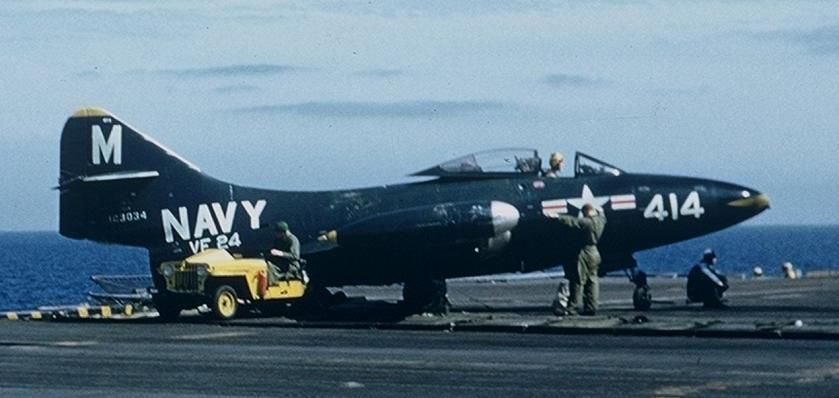
The very first and the sot capable jet fighter that made all the other propeller-driven fighter planes obsolete was the MiG-15. In order to answer this soviet made jet fighter, US made its own set of jet fighters such as the F9F Panther, F-02H Banshee and F-94 Starfire which were used by both the US Marine Corps and US Air Force.
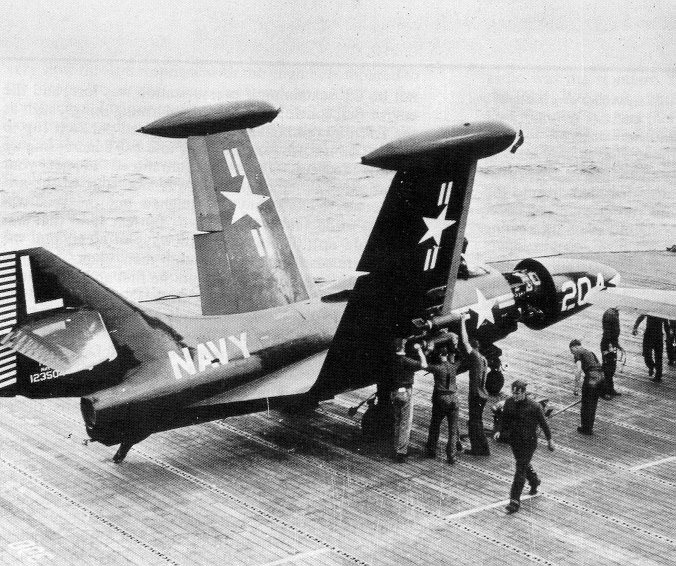
By making the conventional comparison of the US jet fighters of that time with the MiG-15 fighter jet, all the US jet fighter paled in comparison when it came to technology. Still, with the F9F Panther, the pilots and the ground crews were able to deliver the very best of the air superiority capability against the Soviet jet fighter.
Combat Deployments
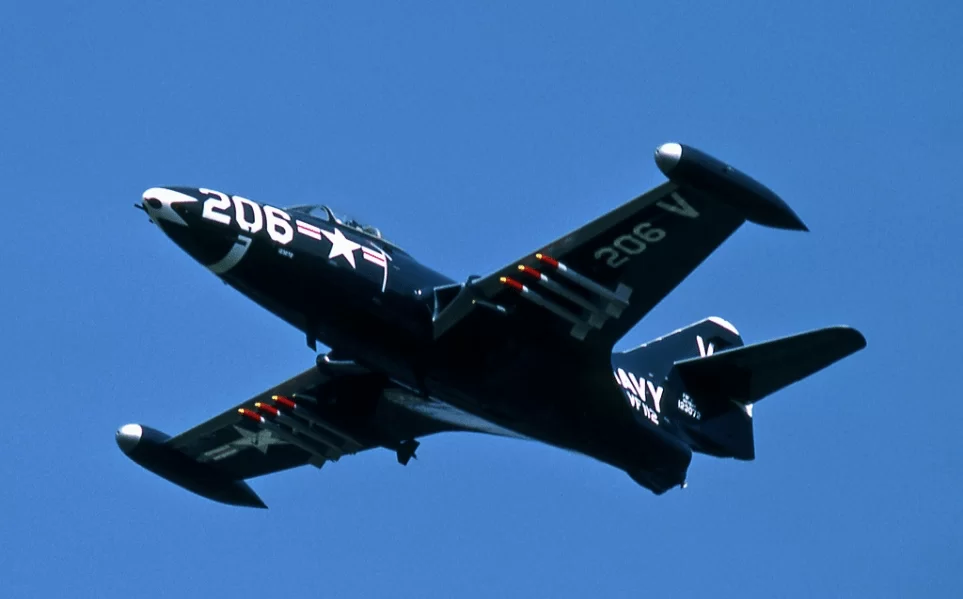
The F-9 jet fighter had a very brief operational tour in line of duty with Blue Angles and even during that it never saw any true combat scenario. The only time when an F-9 was engaged in the combat was during the Vietnam War and it was the trainer named TF-9J.
As for the predecessor F-9; F9F Panther, it saw an expensive service time during the era of the Korean War with the US Navy and the US Marine Corps. Some of the most impressive pilots to have operated the F9F Panther even went on to become the star-studded astronauts for the NSAS such as John Glenn and Neil Armstrong.
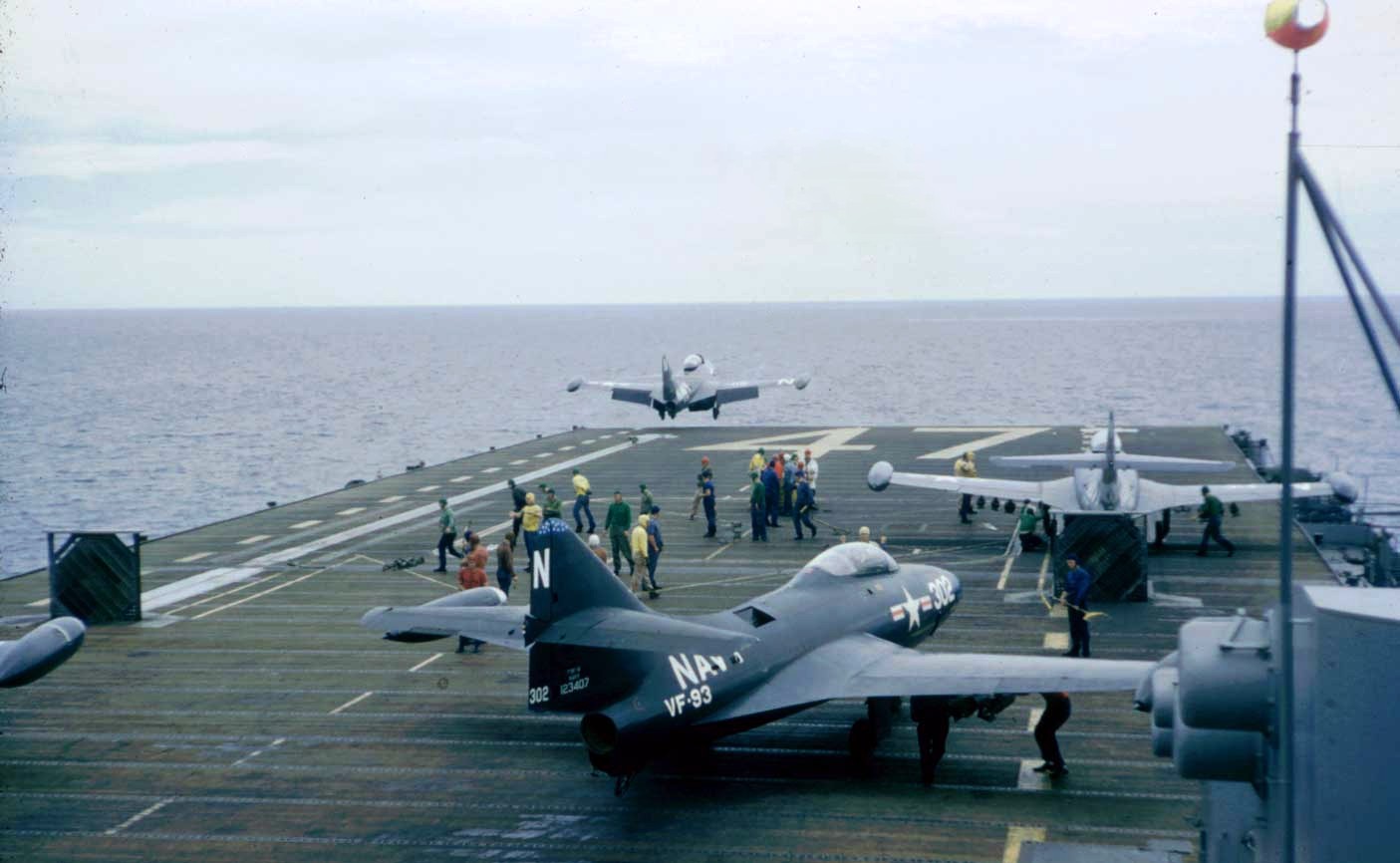
The aircraft was so exceptional in its air superiority missions that it was the only jet fighter of its era to have struck down jet fighters like the Yak-9 and the MiG-15 successively. The aircraft was known for being a rugged yet capable fighter jet with amazing forward control that could provide best close air support to the ground forces.
Export and Retirement:-
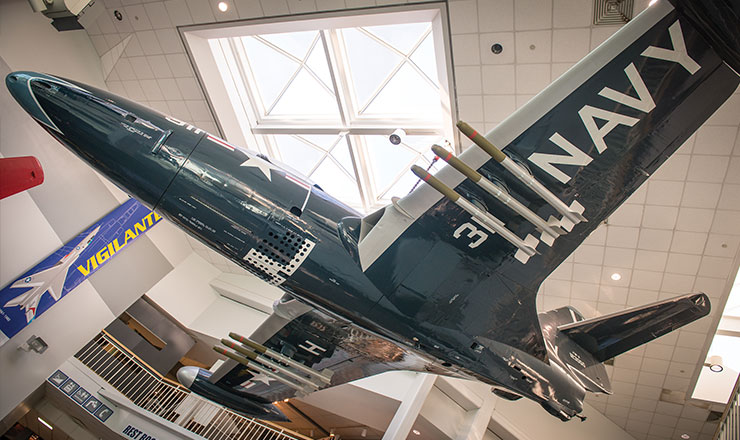
The F9F Panther was also put up for export to other nations and the very first country to have bought it was Argentina. The F9F Panther became their first line of aerial defense and attack as a part of their Argentine Naval Aviation.
However, like all good things, era for the F9F Panther also came to an end. The design of the F9F Panther was of a straight wing and then came the time for swept wings and the first aircraft to replace the F9F Panther was F-8U crusader that was entered in active service back in 1958 and officially retiring the F9F Panther in 1959.
Still many of the F9F Panthers came back for purposes of being trainer jet fighters for next generation of fighter jet pilots. Some were even used by the Air National Guard.
Related Content
Interesting Facts about the Northrop Grumman T-38 Talon; World’s First Ever Jet Trainer
Amazing Facts About the Lockheed U-2 Dragon Lady; The Spy Plane


